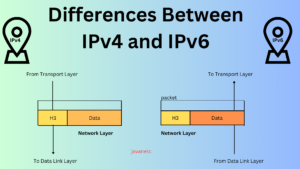Introduction
Continuous Integration (CI) and Continuous Delivery/Continuous Deployment (CD) have reshaped software development, ushering in frequent and dependable incremental code changes. CI automates build-and-test processes, ensuring code merged into the repository is reliable. Subsequently, CD facilitates swift and seamless delivery of code changes. The CI/CD pipeline orchestrates this automation, smoothly transitioning developers’ code from desktops to production. CI involves frequent code integration into a shared repository, while CD encompasses integration, testing, and delivery, with Continuous Delivery stopping short of automatic production deployment, unlike Continuous Deployment.
Table of Contents
Continuous Integration: The Cornerstone of Agile Development
Continuous Integration (CI) is a software development practice where developers frequently integrate code changes into a shared repository, triggering automated build and testing processes with each integration. Its primary aim is to detect and fix bugs, errors, and issues early in the development process, rather than allowing them to accumulate and cause problems later. CI is indispensable for several reasons:
Early Detection of Bugs and Issues: CI enables quick detection and resolution of bugs, errors, and issues, reducing overall costs and ensuring software stability.
Faster Feedback Loop: CI provides rapid feedback on code quality, facilitating quick issue identification and resolution, leading to faster development cycles.
Promotes Collaboration and Integration: By encouraging frequent integration of code changes, CI fosters collaboration among team members, ensuring smooth integration and a stable codebase.
Enhances Code Quality: CI enforces coding standards and best practices, maintaining high code quality by catching regressions and preventing the integration of faulty code.
Accelerates Time to Market: CI streamlines the development process, reducing bug-fixing time and improving overall code quality, resulting in faster delivery of features and enhancements.
Continuous Delivery: Streamlining Deployment Processes
Continuous Delivery (CD) automates the deployment process, ensuring software changes are deployed to production reliably and consistently. It builds upon CI, extending automation beyond integration and testing to include delivery to production with minimal human intervention. CD offers several benefits:
Faster and More Reliable Releases: CD automates the deployment process, reducing time and effort required for releasing new features and bug fixes, enabling organizations to respond to customer needs swiftly.
Lower Risk of Deployment Errors: Automated deployment processes in CD minimize human errors, leading to more reliable releases and fewer production incidents.
Continuous Feedback Loop: CD monitors the production environment, collecting data on software performance and stability, facilitating quick issue identification and resolution.
Faster Time to Market: CD enables organizations to deliver new features and enhancements faster by automating the deployment process, staying ahead of competitors and responding quickly to market demands.
Increased Collaboration and DevOps Practices: CD promotes collaboration between development and operations teams, fostering communication and efficiency.
Enhanced Flexibility and Agility: CD allows organizations to release software changes incrementally, adapting to changing requirements and customer feedback effectively.
Continuous Deployment: Automating Production Deployments
Continuous Deployment (CD) builds upon CD by automatically deploying software changes to production once they pass automated tests, without human intervention. CD offers numerous advantages:
Rapid and Automated Deployment: CD automates software deployment, enabling rapid and frequent deployments, enhancing organizations’ ability to respond quickly to customer needs.
Faster Time to Market: CD accelerates the release of new features and bug fixes, reducing time to market and gaining a competitive edge.
Lower Risk of Human Errors: Automated deployment processes in CD minimize the risk of human errors, improving deployment reliability and stability.
Continuous Feedback Loop: CD continuously monitors the production environment, identifying issues promptly for swift resolution.
Improved Collaboration and DevOps Practices: CD promotes collaboration between development and operations teams, fostering communication and cooperation.
Increased Agility and Flexibility: CD allows organizations to release software changes incrementally, adapting to changing requirements and market conditions effectively.
Enhanced Release Confidence: CD ensures software changes are deployed automatically, following a consistent and repeatable process, minimizing the risk of errors and ensuring consistency across environments.
Key Concepts and Practices for Continuous Processes
Small, Iterative Changes: Emphasizes making incremental changes to the codebase for easier testing and quicker issue resolution.
Trunk-Based Development: All developers work on a single shared code branch, ensuring the codebase is always in a releasable state.
Fast Building and Testing Phases: Keeping building and testing phases fast for quick feedback and efficient development cycles.
Consistency across the deployment pipeline: Maintain process and configuration consistency across different environments.
Decoupling Deployment and Release: Allowing controlled rollouts and feature toggling for flexibility and control.
Types of Testing
Smoke Testing: Quickly assesses basic functionality to determine software stability.
Unit trying out: Focuses on trying out character additives or devices of code in isolation.
Integration Testing: Checks interaction and integration between different components or modules of a software system.
System Testing: Verifies behavior and performance of the software system as a whole.
Acceptance Testing: Validates whether the software system meets the requirements and expectations of its intended users or stakeholders.
Additional Terminology
Build Automation: Automatically compiles and builds software code whenever changes are committed.
Test Automation: Involves automated tools and scripts for various types of testing, such as unit testing and integration testing.
Deployment Automation: Uses automated tools and scripts to deploy software changes to different environments.
Version Control System (VCS): Manages changes to the source code of a software application.
Feature Flags/Feature Toggles: Techniques used to control the release of new features or changes to the software system.
Canary Releases: Deployment strategy where a new version of the software is released to a small subset of users or environments before wider rollout.
Blue-Green Deployment: Deployment strategy involving two identical environments for seamless software releases.
Conclusion
Continuous Integration, Delivery, and Deployment revolutionize software development, offering benefits like improved code quality, faster time-to-market, reduced risk of issues, and increased development efficiency. By adhering to key concepts and practices and implementing effective testing strategies and automation, organizations can successfully adopt continuous processes, delivering value to customers more efficiently and reliably.



